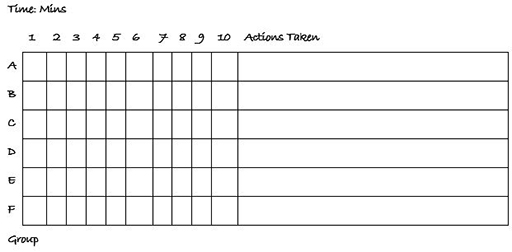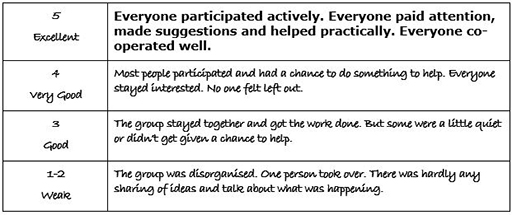Resource 4: Disappearing ice cube race
![]() Teacher resource for planning or adapting to use with pupils
Teacher resource for planning or adapting to use with pupils
Organise your class into groups of four or five.
- For each group, choose someone to be an 'independent observer'. This observer will report:
- how well the group worked together;
- exactly what the group did to solve the problem;
- how long they took to do it.
- Here is the challenge: Each group has a medium-sized ice cube in a polystyrene/plastic cup. Find the best way to make the ice cube disappear without a trace, not even a single damp spot!
- The group observer records the results in a table like the one below on the chalkboard.
- Every minute, each group observer puts an ‘X’ if there is a trace of the ice cube left.
- Before the race begins, give pupils time to talk and plan how they will get the ice cube to disappear.

- Which group found ways to make their ice cube disappear the fastest? Who had the second best way? Which group was the least successful?
- Give the observers a chance to report back on how well each group worked together. They could use an assessment scheme like this one to score each group.

Follow up the ice cube race
Discuss the changes pupils saw as the ice cube disappeared. How does solid ice change (melt) to liquid water and eventually change (evaporate) into an invisible gas or vapour? These are called changes of phase. Finish the lesson by doing this quick quiz. Do this quick quiz:
- List the things you can do to speed up the process of getting solid ice to change into liquid water.
- What is the scientific term to describe the change from a solid to a liquid?
- List the things that speed up the process of turning liquid water into a gas like water vapour.
- What word do we use for the change from a liquid to a gas?
Answer hints:
Factors that affect melting and evaporation are:
- heat;
- size and shape;
- moving air;
- pressure.
Pupils could write a short report on what they learned in the race for homework.
Resource 3: Lesson plan on solubility



